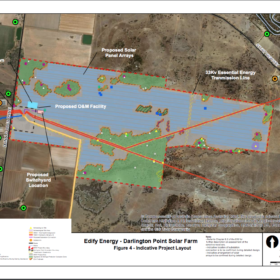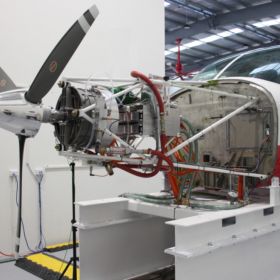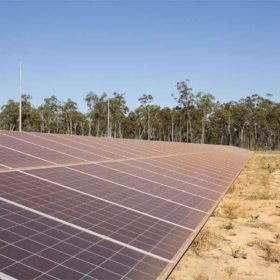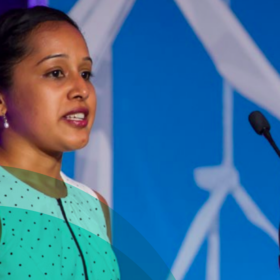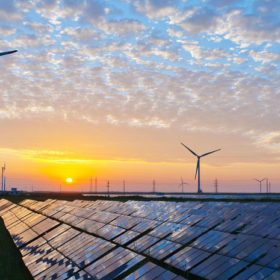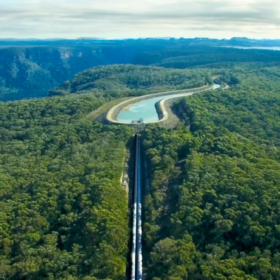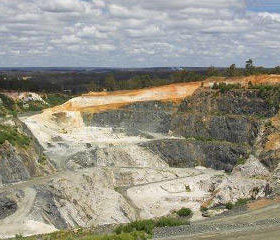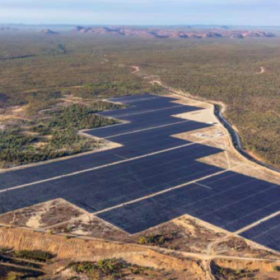Octopus, Edify Energy provide finance for 333 MW Darlington Point solar farm
In the UK investor’s first deal since entering the Australian marketplace, Octopus Investments and Australian renewables developer Edify Energy have arranged more than $450 million to finance one of Australia’s major PV projects – a 333MW DC (275MW AC) solar farm, which has an approval to be collocated with a 100 MWh energy storage facility at Darlington Point, NSW.
MagniX powers forward with electric light commercial aircraft plans
Solar PV is boosting regional economies by providing cheaper electricity to off-grid or edge-of-grid communities and industries; soon it could power cheaper electric aviation services. In three years, Gold Coast company magniX expects to be selling a commercially available certified electric aircraft engine that will reduce the cost of flying light commercial aircraft by between 50% and 80% per operating hour.
Solar PV capacity additions triple in 2018 amid utility-scale boom
Australia’s solar PV capacity additions tripled in 2018, as its rooftop solar fleet continued to set new records high and big PV experienced an unprecedented growth. While stabilization in electricity prices could lead to a slowdown in the rooftop solar segment in all states except Victoria, it is unlikely to result in a noticeable decline in sales in 2019. Large-scale solar PV is in line for over 3 GW this coming year, while small power stations up to 5 MW will also get their time to shine.
CEC releases compilation of women speakers for the renewable era
The Clean Energy Council will officially launch its Speakers Guide to Women in Renewables next week. Its intention is to accelerate industry development with diverse insights, and inspire young women to fill looming skills gaps in a booming field.
Wind, solar cheaper than coal, and responsible for falling energy price outlook
Major reports from Australia’s chief energy institutions point to the importance of wind and solar not just because of their climate credentials, but also the economic benefits they bring. A report from the energy market operator and the CSIRO finds based on analysis of LCOE that renewables are the cheapest new-built power. A separate report from the Australian Energy Market Commission shows that wind and solar will give a typical household a saving of $55 a year in next two years.
Industry execs identify grid connection, policy uncertainty as top challenges
A survey run by the Clean Energy Council among senior executives, leading with a combined net worth of more than $17 billion, shows that clean energy investment confidence is strong. The majority of companies are looking to put on extra staff in the next year. However, challenges in achieving project grid connection and policy uncertainty are causing great stress in the long run.
NSW: 275 MW solar+100 MWh storage at Darlington Point gets regulatory nod
The New South Wales Department of Planning and Environment has given the green light to a massive solar farm coupled with a utility-scale energy storage facility. The project proposed by Edify Energy is valued at $407 million.
Pumped hydro: Snowy Hydro 2.0 approved by board, NSW plans 24 projects totalling 7 GW
The New South Wales government has launched its ambitious pumped hydro roadmap designed to back the rising level of wind and solar in the energy mix. Meanwhile, the board of government-owned energy provider Snowy Hydro has given the green light to its landmark $4 billion pumped hydro expansion project, Snowy 2.0.
Australia aims to become world li-ion battery manufacturing powerhouse
The federal government has launched a strategy seeking investment to unlock Australia’s potential in lithium-ion battery manufacturing. Noting that the nation’s mineral reserves cover 90% of the elements required in li-ion battery chemistry, the new Austrade report underlines that Australia is well-positioned to become a world leader in this fast growing market.
CEC: Over $11 billion in large scale PV under construction
The Clean Energy Council has tallied the numbers underlying Australia’s large scale renewables boom. And big PV is shattering all records, with almost $11.5 billion in projects currently being constructed.
